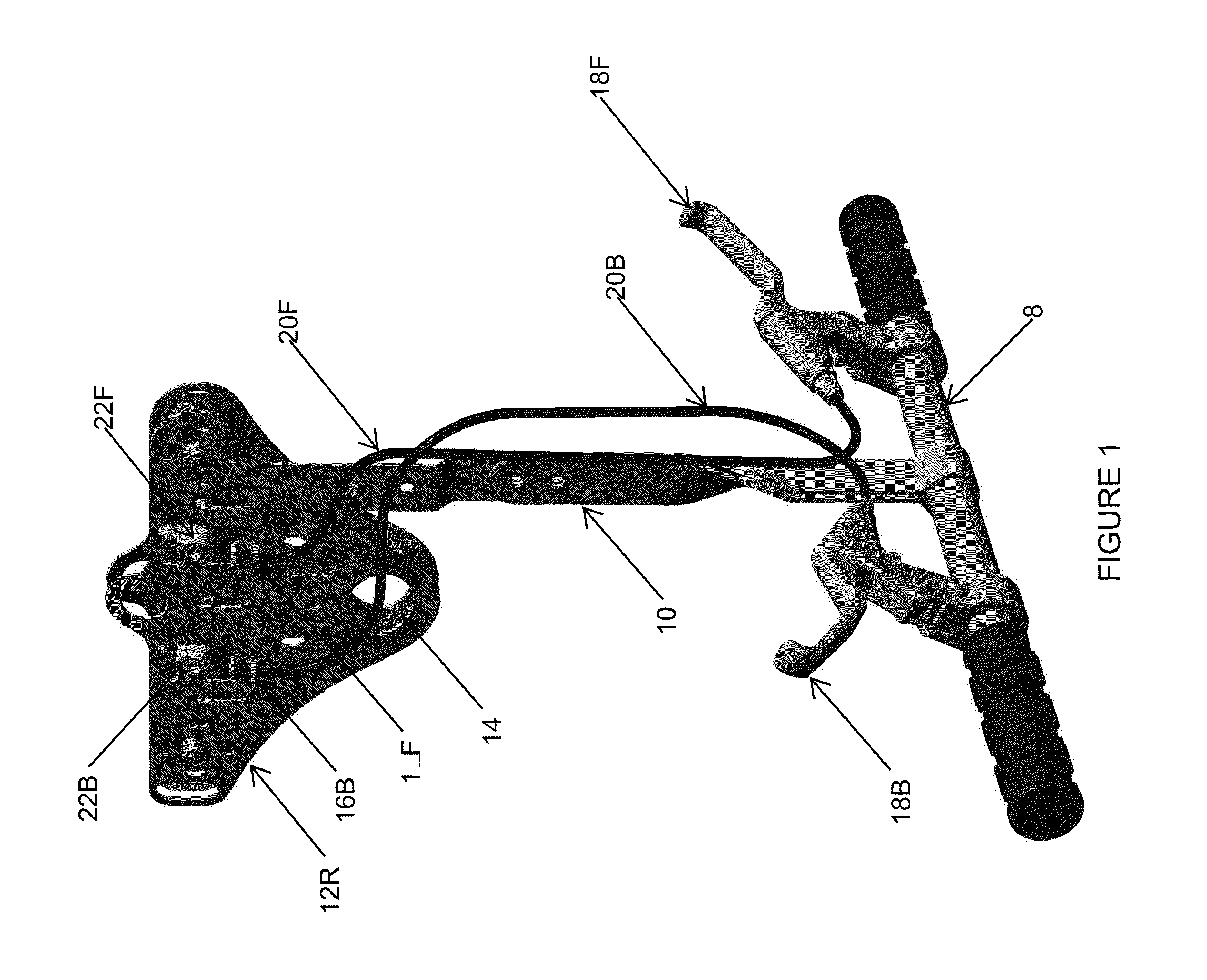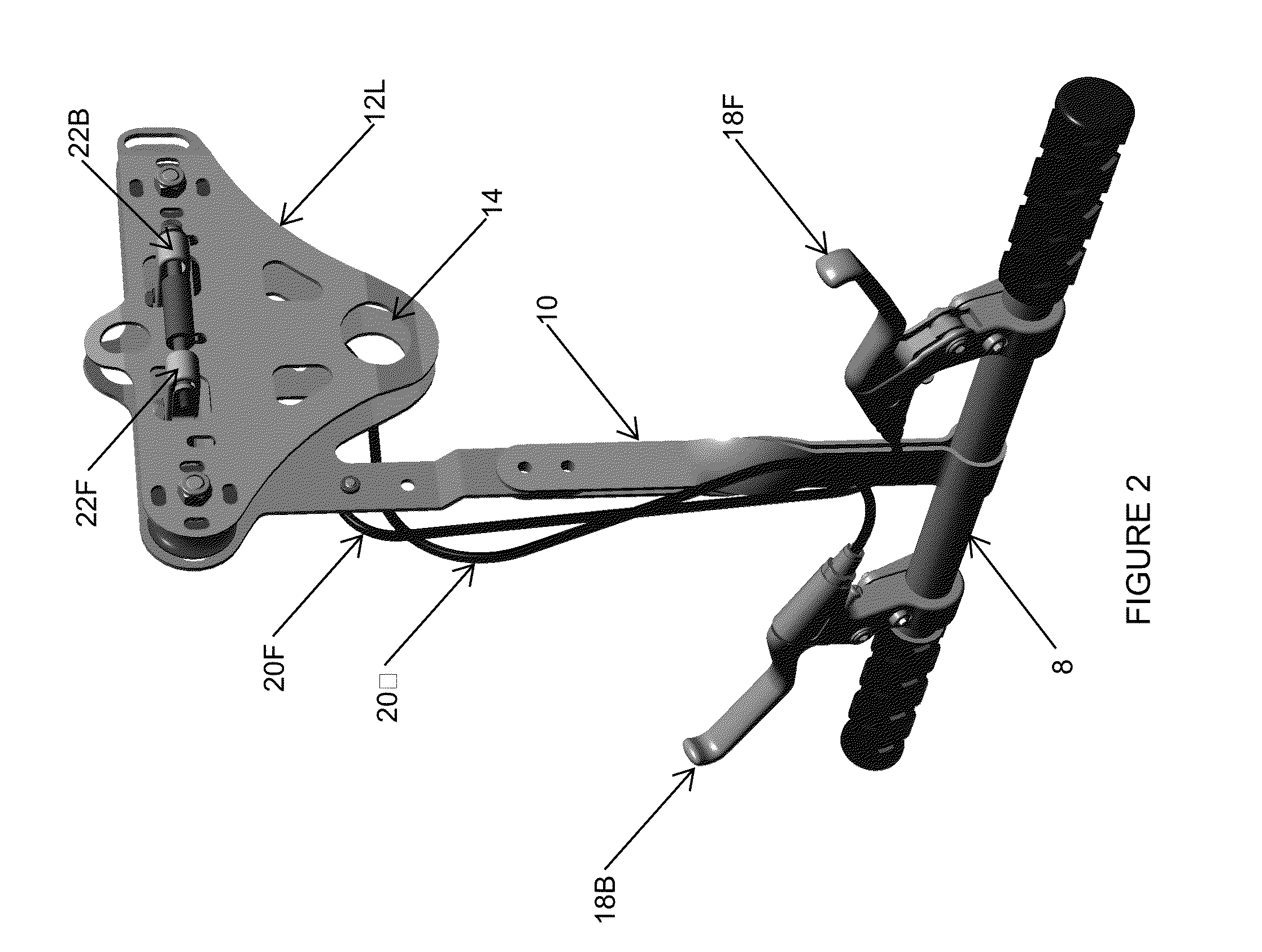The result is a downward slope of the suspended cable.
Unfortunately, they do not afford a rider the ability to control his or her speed of descent while traversing along the suspended cable.
None of the braking systems presently available for common zip lines allow a rider control of his or her speed in a safe, economical and easy-to-use manner.
Additionally, this method of bringing riders to a stop is imprecise and unpredictable in that riders of different weight will each develop a different
momentum.
This can complicate and add expense to the manner in which a zip line course designer designs the means for riders to disembark the suspended cable.
An additional problem with this braking method is the rider has no control of his or her speed while traversing along the suspended cable.
As a result, riders may accelerate to a velocity beyond their comfort level.
It is an undesirable and potentially unsafe function typical of such an
impact braking method.
Similar to gravity braking methods,
impact braking methods are also unpredictable and often do not allow for full utilization of the suspended cable.
Furthermore, riders have no control of their velocity while traversing along the suspended cable.
Rubber tires witness similar results and potential safety hazards as those experienced with elastic cords.
As the rider intercepts the block, the brakeman restricts the
rope's motion, thus slowing the rider, often abruptly.
This is another imprecise and unpredictable braking method which can be unsafe for both rider and brakeman.
Furthermore, employment of a brakeman is an added expense to a commercial zip line
system.
Frictional braking can be the most dangerous among the common zip line braking methods.
This creates dynamic friction along the suspended cable, thus slowing the rider.
This can be dangerous in that the rider can wear a hole through the glove and rub his or her
skin along the suspended cable.
Both of these methods are unpredictable and dangerous as bodily harm can easily be experienced.
Other braking methods known within the art add considerable expense and complexity to a common zip line.
Many methods are rigidly fixed to a particular suspended cable, thus they are not easily transportable to others.
They often include a complicated series of additional pulleys and cables which all must work in
unison to be fully operational.
Should any one piece of such a braking method malfunction, the entire
system and rider's safety may be jeopardized.
This can
pose a serious safety
hazard since a rider's feet may no longer be facing forward.
Common zip line trolleys and safety harnesses allowing riders to twist can be especially dangerous for a zip line system which relies upon riders using their feet to facilitate braking.
This braking mechanism is complicated and elaborate in that it includes a series of mechanical interlocks and springs such to provide functionality for riders to either engage or dis-engage the
actuator for decreasing velocity.
In addition, this braking mechanism as described prevents the ability to quickly and easily remove the trolley from a suspended cable.
Replacement of these brake pads can be difficult in that the entire brake
assembly must be detached from the trolley and disassembled.
Furthermore, this particular trolley can be cumbersome to remove from the suspended cable.
It does not afford itself to quick and easy switching among different suspended cables.
However, riders have no control of their speed for the duration of the ride.
This trolley can be complicated to remove from the suspended cable in that partial disassembly is required.
The rider's speed of descent is predetermined based upon the rider's weight and does not afford speed control to the rider during the ride.
This system is different from the rider controlled zip line trolley brake system as it is foot-actuated and is not intended for thrill-ride or
recreational use.
This is contrary to the rider controlled zip line trolley brake system which applies frictional forces to the suspended cable.
Smallwood's device is not intended, or practical for use on a modern zip line system.
This device would not operate as intended if used in conjunction with a metallic suspended cable rather than a
rope.
Thus, this speed-retarding feature cannot be realized on a common zip line system.
 Login to View More
Login to View More  Login to View More
Login to View More 


